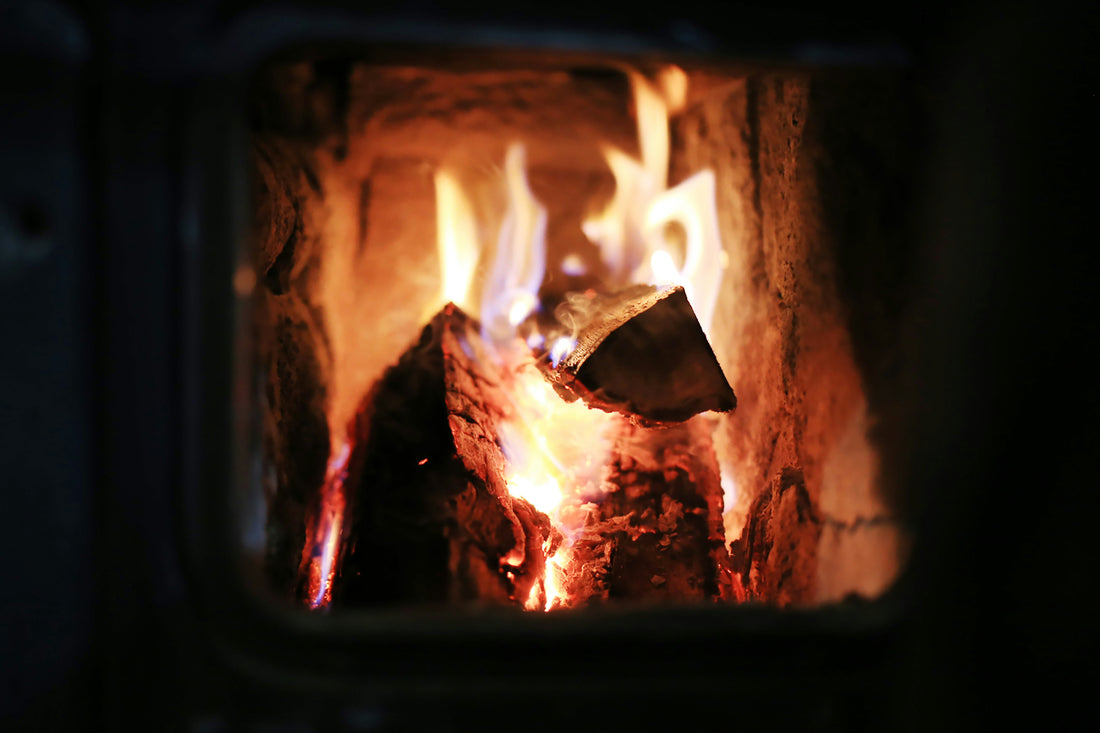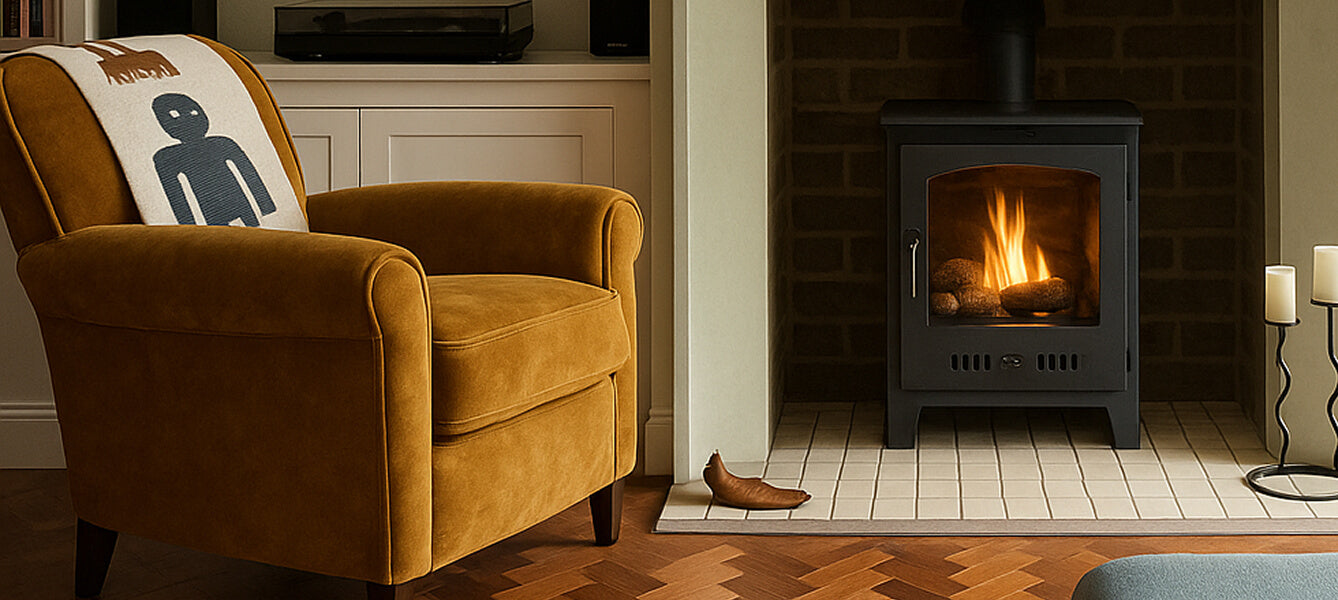
Fireplace Myths and Facts: The Truth About Fireplaces
Fireplaces have been providing warmth and comfort to homes around the world for centuries. These days, fireplaces are also popular for their aesthetic appeal.
Over their long history, many myths have arisen relating to the use, maintenance and capabilities of fireplaces. We’ll take a closer look at some of these more common myths in this article.
We’ll also take a look at some fun facts about fireplaces, highlighting their fascinating history and uses.

Common Fireplace Myths
Many myths have arisen over the years regarding fireplaces and their usage. Let’s take a look at some of the most common.
Fireplaces Need a Chimney or Flue
This is perhaps one of the most prevalent myths about fireplaces because of how fireplaces were used in the past. Most homes with fireplaces used to have chimneys in order to get rid of the smoke. When gas fireplaces were introduced, flues were essential.
But these days, not all fireplaces need chimneys or flues. For example, electric fireplaces can simply be plugged in, making them very easy to use. The problem is that they don’t burn with a real flame, and many people prefer having a real flame burning rather than just a flame effect.
Bioethanol fireplaces, on the other hand, do burn with a real flame, but they still don’t require a flue and certainly don’t require a chimney.
This is because bioethanol burns cleanly and does not produce any smoke or ash. It does release a small amount of carbon dioxide, but only the same as two burning candles, so there is no need for a flue.
Fireplace Installation Is Expensive
On a similar topic, many people are reluctant to install a fireplace even if they want one because they think it will be too expensive.
But the truth is that it can cost very little or nothing at all, depending on the fireplace you get.
A wood-burning stove or gas fireplace could be expensive because you will need to create a chimney or flue. Electric and bioethanol, on the other hand, are very cost-effective. In fact, a self-standing bioethanol fireplace won’t need any installation at all.
So if you are putting off getting a fireplace because you don’t want to construct a flue or chimney, now you have an option.
Fireplaces Are Expensive to Use
Whether a fireplace is expensive or not is subjective, but they can be a lot less expensive than you may think.
If you have a wood-burning stove and some wood from a tree in your garden, it’s essentially free fuel. Gas and electricity, however, will add to your energy bills.
Bioethanol needs to be purchased, so there is a cost involved. However, the fuel lasts a long time and is very cost-effective. As such, a fireplace does not need to be expensive to use, as long as you choose the right one.

Fireplaces Are Not Sustainable
Some fireplaces are not very sustainable, but these are typically the older models. New fireplaces, on the other hand, can be very sustainable.
Burning wood or coal is not great for the environment, and burning gas also has environmental effects. However, a fuel like bioethanol is more sustainable. It is made from plants, making it a great option for those who want to reduce their impact on the environment.
Fireplaces Do Not Heat the Room Efficiently
Modern fireplaces are more efficient than ever before, and while most homes rely on central heating these days, you can still get plenty of warmth from a fireplace.
Some open heaths may not be particularly efficient, but modern fireplaces can distribute heat very effectively and evenly to warm a medium-sized room.
Technology like firebacks can also help to radiate heat through the room, and the position of furniture can play a role in improving the heat distribution.
You Can Burn Any Wood in a Fireplace
You may think that if you have a wood-burning stove, you can use any type of wood. But you have to be careful.
Painted wood and treated wood can release fumes as well as damage your fireplace. Burning wet wood can also lead to the buildup of creosote, and this makes chimney fires a greater risk. Stick to burning dry, untreated wood instead.
You Don’t Need to Clean or Maintain a Fireplace
This depends on the type of fireplace you have, but most fireplaces require at least some maintenance.
Wood-burning fireplaces need regular maintenance to ensure they are clean and in good condition. Gas fireplaces also need to be checked regularly by a Gas Safe engineer to ensure they are safe to use.
Bioethanol fireplaces won’t need much maintenance, but you should inspect yours regularly to ensure it is working properly, and be sure to check for cracks in the fuel box from time to time and regularly check biofuel has not accidentally been sprayed into any of the small crevices or the housing unit of the bifoire.
Fireplaces Are For Winter Only
This is still a prevalent myth about fireplaces, but the truth is you can use them on colder days at any time of year.
You won’t want to during the hottest months of summer, but in spring and autumn, a fire can be very pleasant.
If you have a modern bioethanol fireplace, you can enjoy watching the flames without getting excessively hot and enjoy it as a design feature for use throughout the year.

Fireplaces Are Too Old-Fashioned
This is completely wrong. Fireplaces come in a huge range of styles, including ultra-modern wall-mounted designs. They look nothing like traditional fireplaces, and may be more suitable for modern homes.
Of course, you can still get a traditional fireplace if you prefer, and you have more choices than ever before these days.
Fun Fireplace Facts
We’ve taken a look at the many fireplace myths that have sprung up over the years, so now let’s take a quick look at some fun facts about fireplaces relating to their history and usage.
The Inventor of the Fireplace
Fire has been used by humans for thousands of years, and fireplaces have been in homes for centuries. They underwent little change over the centuries, up until the 18th century.
This was when Sir Benjamin Thompson, also known as Count Rumford, revolutionised the design of fireplaces. He invented the Rumford fireplace to improve their efficiency and smoke control.
While he didn’t exactly invent the fireplace, this was a significant update to fireplace technology, and it laid the groundwork for the efficient modern fireplaces in homes today.
Protection From Evil
Fireplaces were used in homes for warmth and to cook on, but there was another reason – people believed that if they kept the fire burning, they would protect their homes from evil spirits.
This is the witch in the fireplace myth, one of the folk myths about fireplaces, where witches were thought to enter through the chimney if the fire was not lit. This probably came around through the belief that fireplaces were thought to be portals for spirits in folklore.

Largest Fireplace
Fireplaces come in all shapes and sizes, but some are bigger than others. Did you know that the biggest fireplace in the world is in New Hampshire, USA?
The DaVinci Custom Fireplace is one of the largest gas fireplaces in the world. It measures an enormous 66 feet wide and 30 inches tall!
First Chimneys
The first recorded examples of chimneys date back to Pompeii in the first century. However, domestic chimneys were not introduced until the 12th century in Northern Europe, but only in large homes. They only became common in most homes by the 16th century.
Chimney Name
The word chimney is common now, but where does it come from? It comes from the Old French word ‘cheminee’, and this could be derived from the Greek word ‘kaminos’ or the Latin word ‘caminus’ which means furnace.
Find Your Perfect Fireplace
Fireplaces have a fascinating history, and they have played an important role in the home for centuries and are still popular to this day. We hope that we’ve helped to dispel some common fireplace myths and that you’ve enjoyed reading about the fireplace facts.
Fireplaces continue to evolve, from the traditional hearths of old to the modern fireplaces of today, and they remain important in homes across the world.If you’re looking for a new fireplace, you may want to consider the myths covered in this guide to help you choose the right fireplace for your home and get the most out of using it. Remember, bio-ethanol fireplaces are the safest and most economical option!
